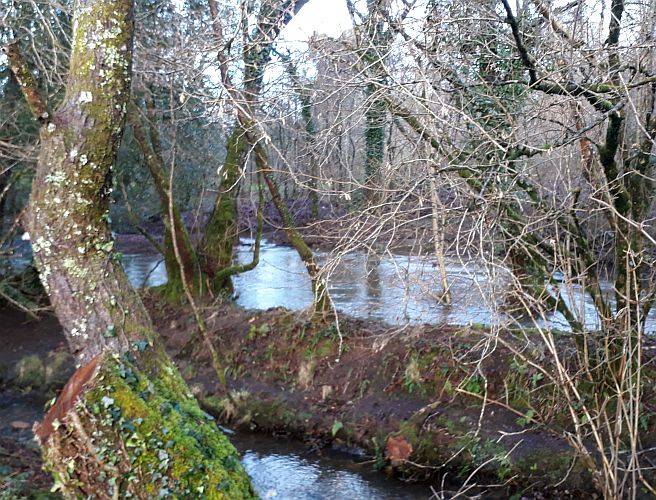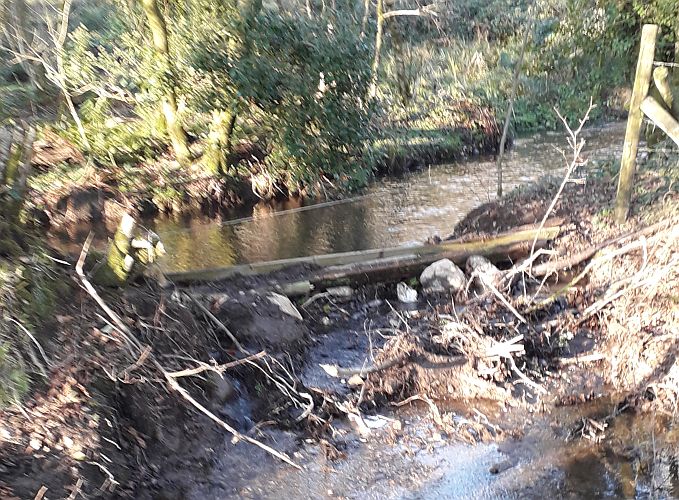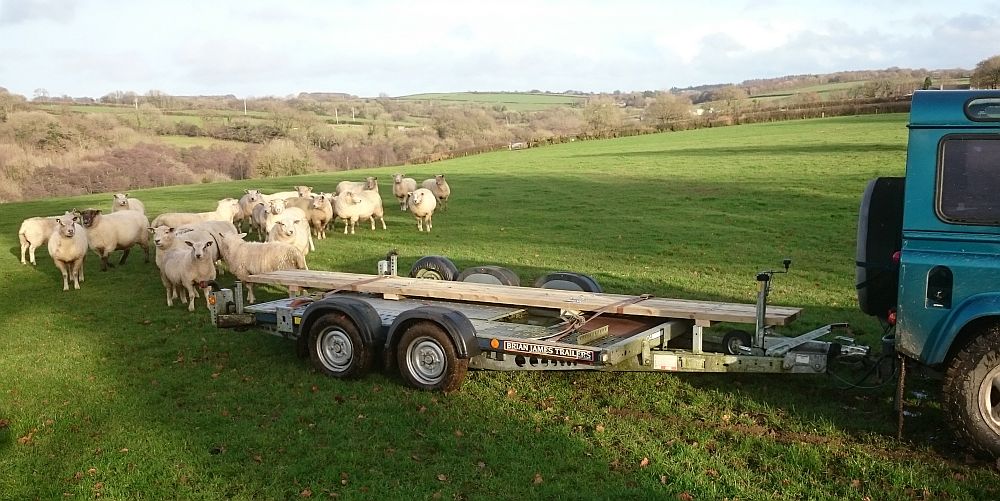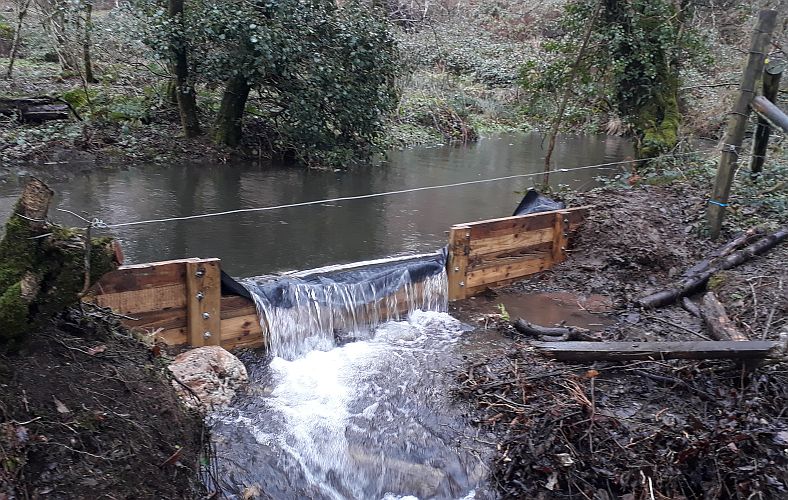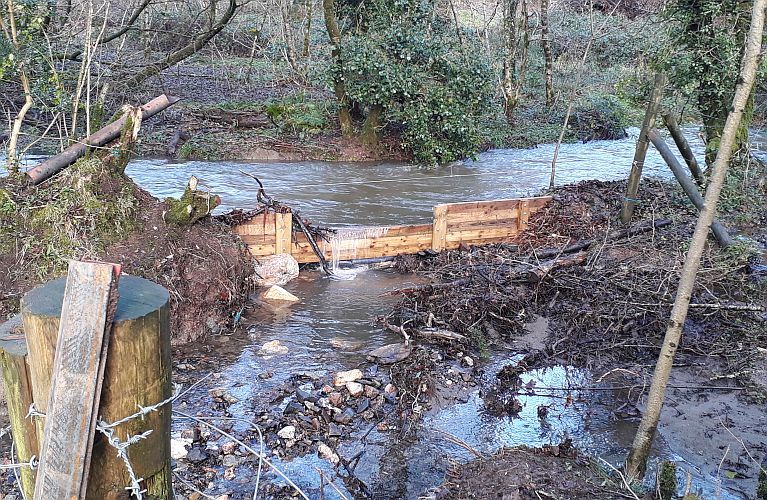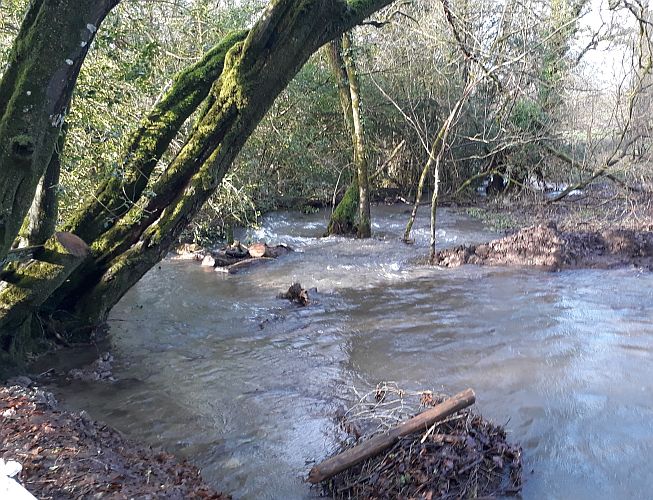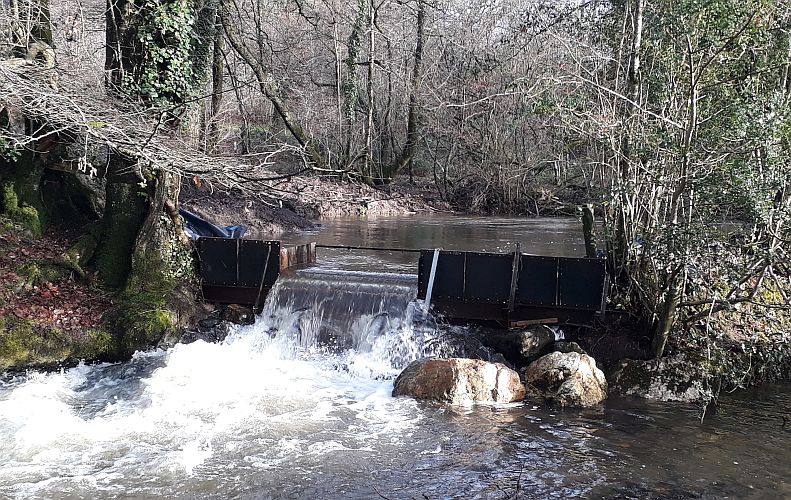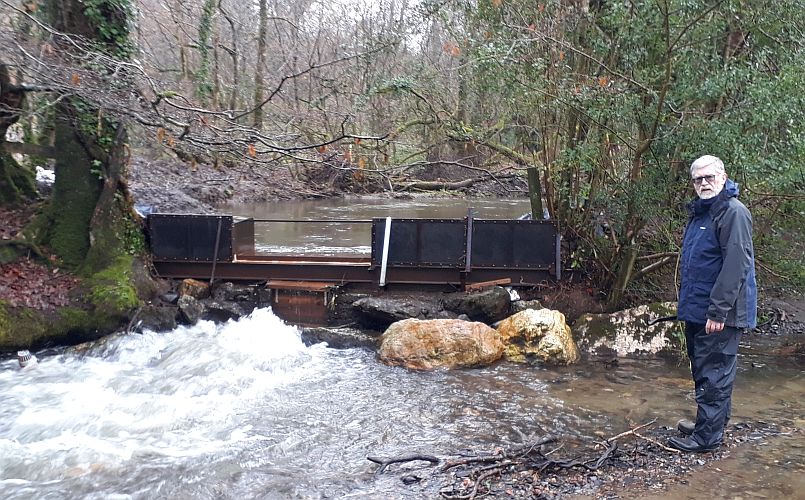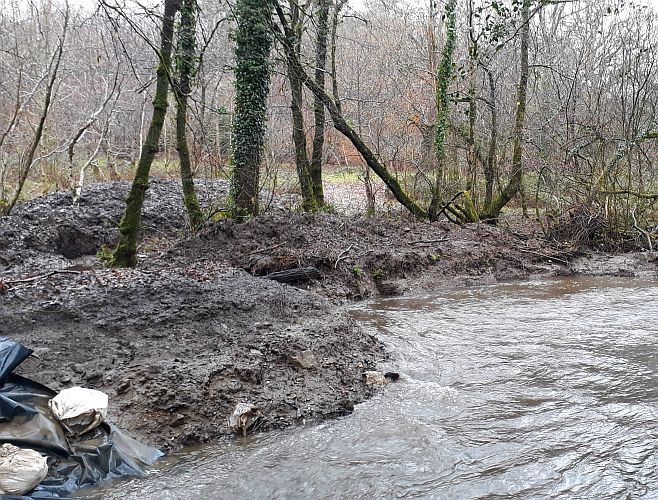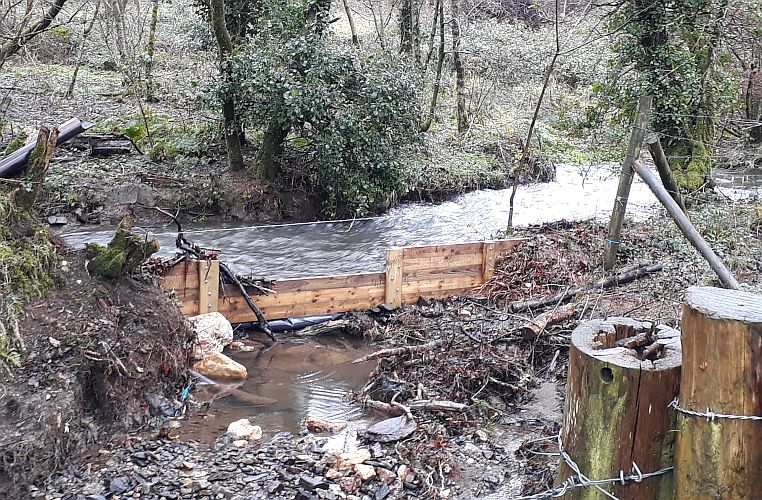Rain stops play on SHARE hydro project… but only for a while
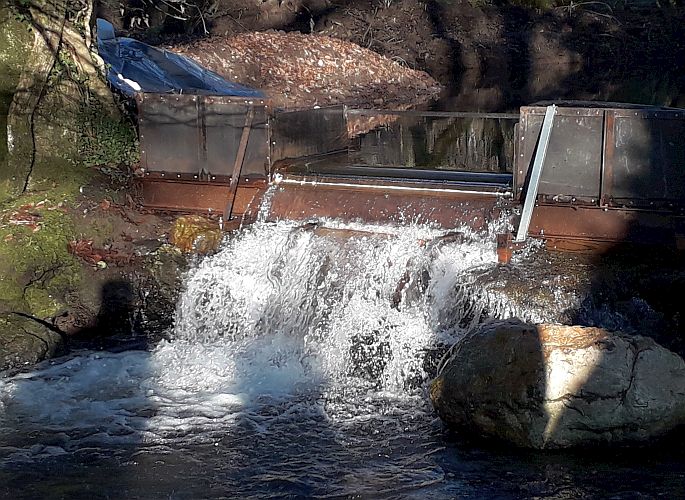
If you even glanced out of the window in mid-December, you may have noticed the rain…lots and lots of it. So even though SHARE are pushing full tilt to getting the hydro project monitoring, we have to recognise that the extreme downpours and Orange weather warnings all impacted what we do. But there has been plenty of progress all the same.
One step Forward
We knew fairly early on that we’d need to put some kind of management to the flow to the weir, and ensure that we protected the structure and the water course from excessive events. This foresightedness turned into action for Trevor, Graham and Geoff as a controlled spillway was designed, manufactured and installed on the southern bank, just a little upstream. The idea was to constrain the river flow within its original course but give it an escape route if water levels get out of hand. By dint of much dragging, digging and wading around in the now somewhat chilly water, this has been achieved and demonstrated in spectacular style. We have a sidewall, much like you’d see along the edge of a canal, which has a deliberate step cut in it, carefully positioned just a few centimetres below the top of the weir. As water levels rise, this allows as much water as possible to enter the measurement zone, but allows an overflow such that the dam almost but not quite overfills. After the torrent of that week in December, we can see that the spillway spilt just where we wanted it to, the dam filled up but didn’t overflow, and we have made the maximum head we can safely achieve. Result!
Two steps Forward
The team had performed some simple calculations to estimate the forces on the dam, which raises the water level by up to 800mm and is around 3 metres wide in total. Our calculations show around three quarters of a ton evenly distributed on the structure, which is itself reinforced by a 200mm RSJ. However, there’s nothing more encouraging than a proof test. This happened on Friday 18th, as the dam filled up to just a few cm from the top and remained in place without even flexing for hours. This was an expected win, but we’re treating ourselves to a “told you so” moment!
Three steps Forward
The specialist logger equipment is designed and manufactured in the USA, but we got our order in in the nick of time. There were concerns that the restrictions on flights and freight inbound might cause some hangups in the delivery, and Customs logjams post Brexit would have been a nightmare. But our suppliers at Tempcon have pulled the rabbit from the hat, and all the gear is now here on site ready for the next stage.
And one step back
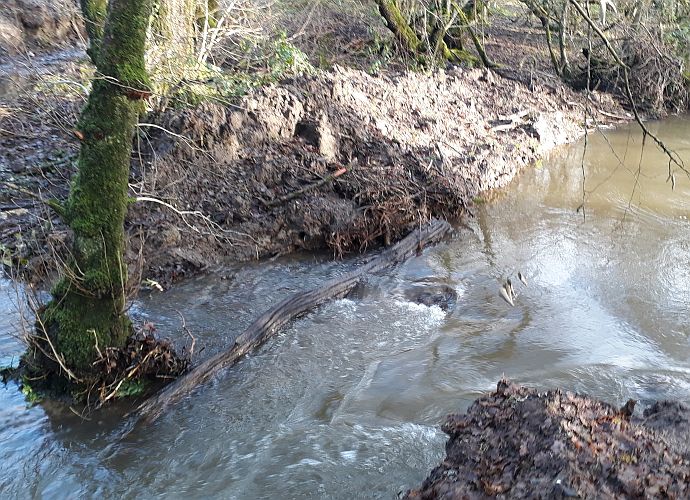
The deluge and testing described above has been a great success, but in the process it has uncovered one weakness. The southern bank has been fine, but a weak area of the northern bank has been exposed, with some of the earthworks suffering from inundation and a lack of solid material linking it together. We’ve arrested the problem, as we took the decision to open the “lock gate” and allow the water to drop to its original level. This serves two purposes: it takes the pressure of the weak spot and it gives us a working area that is no longer under four feet of water. It is all safe and sound, but until the ground dries out a bit, there’s no way we’ll risk taking machinery to the river to make a permanent reinforcement. We might be able to do it by hand, and plans are being rearranged to suit, but with the weather warnings in pace, it’ll probably be allowed to settle down till after the New Year, or possibly even the early spring.
So what’s next?
The team are taking some thinking time over Christmas and the New Year, so that we can attach the reinforcement of the north bank in a safe and controlled manner, hopefully on some safer footing. Remember that we need at least a year’s data to run the study: it’s kind of obvious that the project would have enough water in flood, but less so as we head into the spring. In the New Year there will be more earthworks, maybe some new construction, and then finally we can worry about instruments, cloud storage and networks. We’ll keep you posted.
Thanks once again to Graham Beven, Mike Davies and Astrid Fischer.
Geoff Hardman
